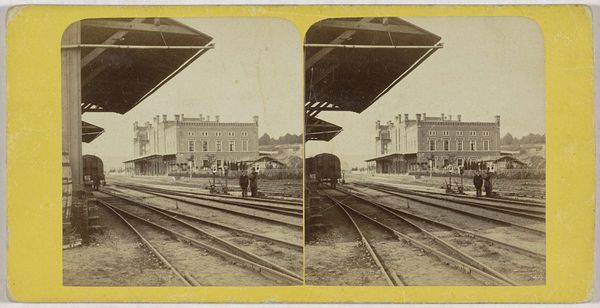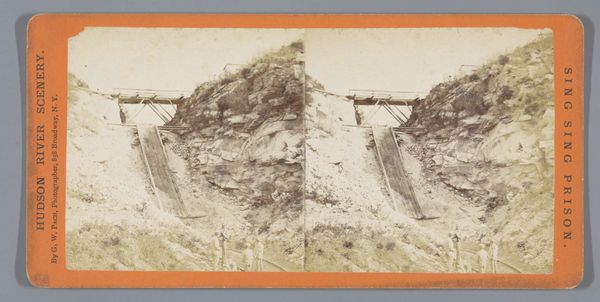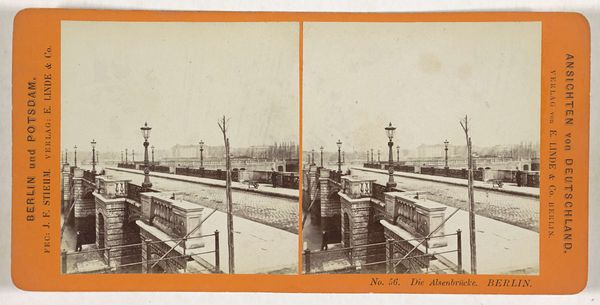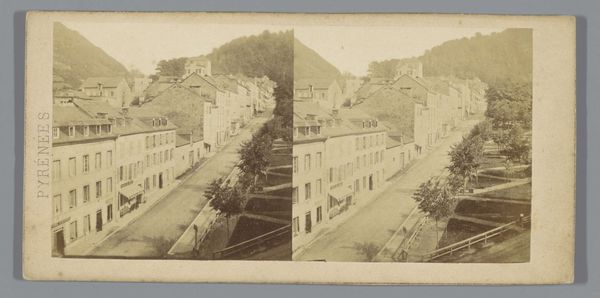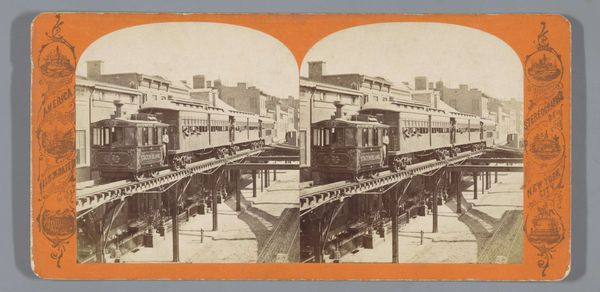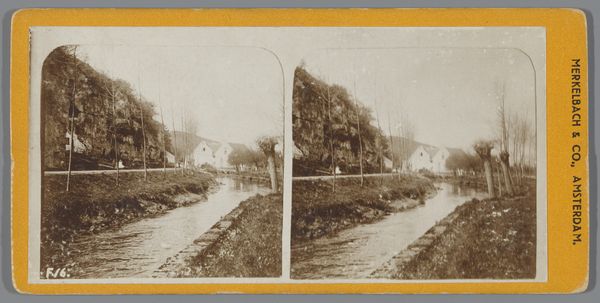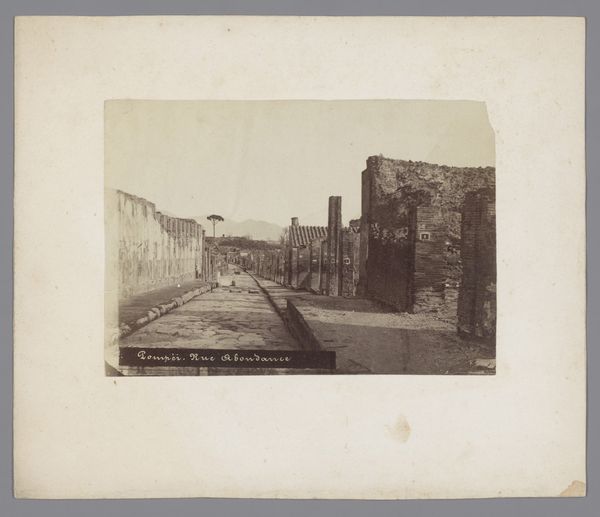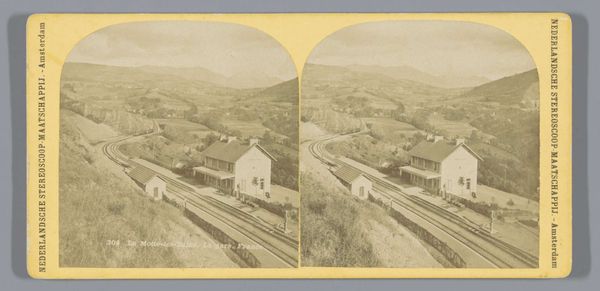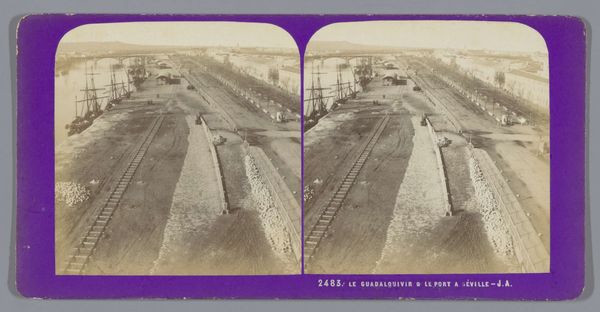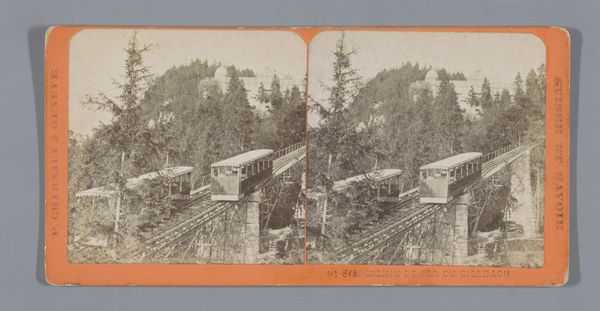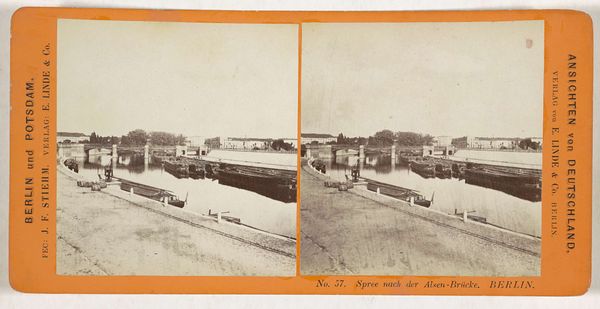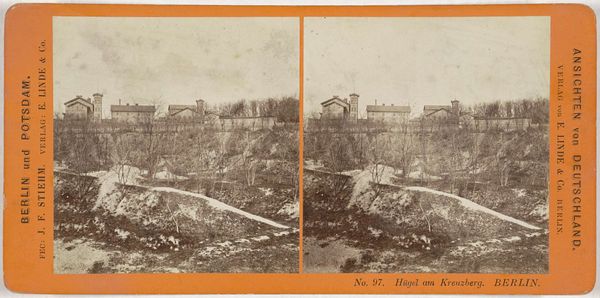
photography
#
landscape
#
photography
#
coloured pencil
#
hudson-river-school
#
cityscape
Dimensions: height 87 mm, width 176 mm
Copyright: Rijks Museum: Open Domain
Editor: This stereoscopic photograph, “Gezicht op het treinspoor bij Sing Sing Correctional Facility,” or "View of the Railroad Tracks at Sing Sing Correctional Facility", taken by G.W. Pach sometime between 1871 and 1877, is so stark. The imposing walls and converging train tracks create a real sense of confinement. How do you read this image? Curator: It's fascinating, isn’t it? Beyond its aesthetic qualities, this image offers a potent commentary on the function of art in the late 19th century. Pach wasn’t just documenting a location, but engaging in a discourse about the relationship between nature, industry, and incarceration. Editor: Industry and incarceration? Curator: Absolutely. Consider the Hudson River School's romantic portrayal of the American landscape. This photograph seems to consciously juxtapose that with the harsh reality of industrial progress—the railroad—and the equally stark reality of Sing Sing Prison, all presented as Hudson River Scenery. Notice how the photo flattens space and seemingly traps the gaze, a symbolic representation of how society aimed to manage – and visually control – individuals deemed undesirable. Do you think this "Hudson River Scenery" served as propaganda for state power, or something else? Editor: That's a very different lens through which to consider this photograph, especially when contrasting it with the paintings from the Hudson River School! I suppose seeing it connected to systems of control and the broader societal implications of landscape art makes it far more thought-provoking. Curator: Exactly. By situating it within these socio-political currents, we uncover the photograph’s rich layers of meaning. Editor: It's made me rethink how photographs can shape public opinion, just like paintings can. I am left thinking of how this piece has made me reflect on what it means to have a position and say on important social problems. Curator: Precisely. It shows how looking at art with an understanding of history lets you recognize propaganda but helps open one's eyes too.
Comments
No comments
Be the first to comment and join the conversation on the ultimate creative platform.
